As the fall semester gets underway, we h ave again invited a number of contributors to The Immanent Frame to reflect on what they’ve read these past few months on the broad topic of secularism, religion, and public life.
ave again invited a number of contributors to The Immanent Frame to reflect on what they’ve read these past few months on the broad topic of secularism, religion, and public life.
We asked: What are the best books and essays you’ve come across this summer? What are you most looking forward to reading in the near future?
Our respondents are:
Courtney Bender, Associate Professor of Religion, Columbia University
James S. Bielo, Lecturer of Anthropology, Miami University
Anderson Blanton, Postdoctoral Fellow, Center for the Study of the American South, University of North Carolina at Chapel Hill
John D. Boy, Ph.D. candidate in Sociology, City University of New York
Wendy Cadge, Associate Professor of Sociology, Brandeis University
Simon During, Professor at the Centre for the History of European Discourses, University of Queensland
Omri Elisha, Assistant Professor of Anthropology, Queens College of the City University of New York
M. Christian Green, Senior Fellow, Center for the Study of Law and Religion, Emory University
Martin Kavka, Philip and Muriel Berman Chair of Jewish Studies, Lehigh University
Tanya Luhrmann, Professor of Anthropology, Stanford University
John Schmalzbauer, Blanche Gorman Strong Chair in Protestant Studies, Missouri State University
Jeff Sharlet, Mellon Assistant Professor of English, Dartmouth College
______
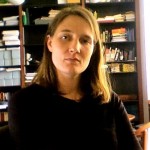 Courtney Bender, Associate Professor of Religion, Columbia University
Courtney Bender, Associate Professor of Religion, Columbia University
This summer I pledged to read outside of my box of religion and sociology at least a little bit, and was greatly rewarded by Jonathan Crary’s Techniques of the Observer (MIT, 1992) which I’d read in parts before, and Suspensions of Perception (MIT, 2001). As “observation” is also the ethnographer’s métier, it was quite useful to consider the politics, aesthetics and technologies of observation that have directly or indirectly shaped my discipline’s self-understanding and practice. I’ve also just finished the delightfully creative Knossos and Prophets of Modernism (University of Chicago, 2009) by Cathy Gere, a beautifully written analysis of the fabrication (thanks to reinforced concrete!) of Knossos, and its key architect and archaeologist Alfred Evans’ fabrication of the ancient kingdom of Minos. Knossos’ influence in shaping a prophetic modernist style provokes a different way to consider the complications of modern secularity. I’m looking forward to the fall publication of Matthew Engelke’s God’s Agents (University of California, 2013) and was happy to receive Anna Fedele’s superb Looking for Mary Magdalene (Oxford University, 2012) in the mail. They are great reads and I can’t wait to teach them. Of course, no summer would be complete without tackling a long nineteenth century novel – this year it was Dickens’ David Copperfield – which kept me happily occupied on two long-distance train trips through the Swedish countryside.
______
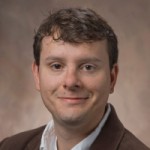 James S. Bielo, Lecturer of Anthropology, Miami University
James S. Bielo, Lecturer of Anthropology, Miami University
My most surprising summer read came in the form of a gem of a used book find: an unmarked copy of W. Lloyd Warner’s The Family of God: A Symbolic Study of Christian Life in America (Yale University, 1961). Warner was slightly ahead of his time as a dedicated ethnographer of middle-class American life, and in Family of God he was more than slightly ahead as an ethnographer of American Christianity. Surprisingly, I found (while carefully turning yellowed pages and managing a cracking spine) that Warner’s book is also an incisive reading of religion-secular entanglements as played out in the public life (holidays, parades, cemeteries, memorializing Revolutionary figures, and dead Presidents) of a small New England city, later revealed as Newburyport, MA. Through systematic fieldwork of community life, Warner finds religious and secular imperatives as locked in dialogue, tracks everyday processes of sacralizing and secularizing, and presents the secular as a presence that is actively made rather than an absence or an invisible canopy. On this last point, I was particularly enthused. After all, Warner was writing more than forty years before Talal Asad’s Formations of the Secular and was immersed in an intellectual context committed to Weberian secularization.
Family of God reminded me that it is well worth remembering the dusty works amidst our continuous deluge of newer publications, those works hiding behind the I’m-getting-there stack on all our desks. For me, on top of that stack is a forthcoming book from Matthew Engelke, God’s Agents: Biblical Publicity in Contemporary England (University of California, 2013), an ethnography of cultural production among the British Bible Society. Engelke’s work will distinguish itself as one of the most empirically grounded studies of public religion that we have to date. Like Warner, Engelke brings the oft-abstract dynamics of religion-secular entanglements into clear view through the craft of fieldwork.
______
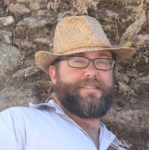 Anderson Blanton, Postdoctoral Fellow, Center for the Study of the American South, University of North Carolina at Chapel Hill
Anderson Blanton, Postdoctoral Fellow, Center for the Study of the American South, University of North Carolina at Chapel Hill
As an anthropologist interested in the materiality of prayer, I was excited this summer to see that the new volume, Things: Religion and the Question of Materiality (Fordham University, 2012), edited by Birgit Meyer and Dick Houtman, had been recently acquired by my university library. Skillfully describing an antagonism between the spirit and the material object that has traditionally governed the modern study of religion, the introduction (“Material Religion—How Things Matter”) and opening section (“Anxieties about Things”) of this collection will provide a great resource to both beginner student and seasoned scholar. Likewise, the introduction includes a summary of the recent “material turn” in the academic study of religion over the last two decades that I have found quite useful. In addition to these theoretical discussions on the question of materiality, several of the essays within this volume explore the ways in which religious objects such as blood, mass-produced images of Jesus, and face veils challenge established notions of political agency, secularism, and the public sphere. This impressive collection contains contributions from many of the leading scholars in the burgeoning field of material religion. Things: Religion and the Question of Materiality is part of “The Future of the Religious Past” series edited by Hent de Vries. Because this volume offers productive new ways to approach the resurgence of religious forces in the present moment, I look forward to the next installment in the series on the subject of Gestures (edited by Anne-Marie Korte and Martin van Bruinessen).
______
 John D. Boy, Ph.D. candidate in Sociology, City University of New York
John D. Boy, Ph.D. candidate in Sociology, City University of New York
I spent part of this summer trying to figure out how evangelical missiology has changed over the course of the last few decades. I wanted to know how this kind of evangelical engagement is transforming in a world that is increasingly urban. I read a few books by social scientists, such as Emerging Evangelicals (NYU Press, 2011) by anthropologist James S. Bielo and Sacred Subdivisions (NYU Press, 2012) by geographer Justin Wilford. But I also read several theologians, who since the 1980s have been making use of sociology and cultural anthropology in hopes of making sense of our changing world. Harvie M. Conn’s A Clarified Vision for Urban Mission (Zondervan, 1987), a book that has been a major influence on several leading figures in contemporary evangelicalism, contained several (to me) surprising passages on social justice and the shortcomings of individualized soteriology. Mark Laing’s Crisis to Creation: Lesslie Newbigin and the Reinvention of Christian Mission (Wipf and Stock, 2012) gives the most comprehensive account to date of an influential thinker in the field of Protestant missiology. I also revisited some of the essays in Andrew Walls’ classic The Missionary Movement in Christian History (Orbis, 1996).
My other reading did not relate directly to the topic of religion and secularism. I read Wolfgang Streeck’s 2012 Adorno lectures, Buying Time: The Postponed Crisis of Democratic Capitalism (Suhrkamp, 2013) which I found impressive for how it combines hard-nosed comparative research with a theoretical perspective informed by the crisis theory of the Frankfurt school. Too often comparative researchers dismiss and disparage such critical perspectives (and vice versa).
Finally, my evenings were occupied by reading science fiction, mostly by China Miéville. His book The City and the City (Macmillan, 2011) should be required reading for every social scientist, and the books in his Bas-Lag trilogy are indispensable for the aspiring thaumaturge.
______
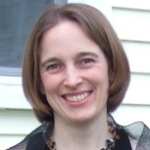 Wendy Cadge, Associate Professor of Sociology, Brandeis University
Wendy Cadge, Associate Professor of Sociology, Brandeis University
I’ve spent the summer reading and talking with people about how religion and spirituality are present in a range of secular settings. This includes informal conversation with chaplains who work in fire and police departments as well as alongside the National Guard, in airports and in ports and other maritime contexts. I’m as interested in what the chaplains do as in how they describe the presence of religion and spirituality in these settings – places that I can’t just walk and start to observe. Kate Braestrup’s descriptions in Here if You Need Me (Back Bay Books, 2008) about her work as a chaplain with the Maine Warden Service provide beautiful insights from the field. Winnifred Sullivan’s forthcoming book A Ministry of Presence: Chaplaincy, Spiritual Care, and the Law – she let me read the final draft – provides an important overarching context. Primary sources about individual cases are fascinating, encompassing everything from the history of the chapels at JFK airport to the stories of port chaplains who serve crew from around the world, working on container and cargo ships that pass through American ports daily. Scholars have a lot to learn about how different secular organizations allow and make space for religion and spirituality, what factors account for variation across sectors, and what religion and spirituality look like in diverse settings. I hope the case studies I am currently working on will further those efforts.
______
 Simon During, Professor at the Centre for the History of European Discourses, University of Queensland
Simon During, Professor at the Centre for the History of European Discourses, University of Queensland
First up, a novel. J.M. Coetzee’s Childhood of Jesus (Penguin, 2013) a mysterious book in which a refugee boy who may, or may not, resemble Christ, finds himself in a sinister country which may, or may not, resemble Australia, and in which networks have replaced community, bureaucracy democracy, and benevolence caritas. I took the novel’s point to be: you can’t imagine a life of Christ in a land like ours. There’s just not enough mystery. Ambiguity, which abounds, doesn’t cut it. But others will no doubt read the novel differently.
Second up, a group of two: Maurice Blanchot’s The Infinite Conversation (L’Entretien infini) (University of Minnesota, 1992) and Roland Barthes’s late-seventies lecture course at the Collège de France on “The Neutral.” The Neutral (Columbia University, 2005) as a metaphysical/semiotic concept developed (rather differently) by Blanchot and Barthes never really took flight in the Anglophone theory world, despite these two absolutely wonderful books. But for those of us who continue to puzzle about what the secular might be, it remains, I suspect, an instructive concept since it takes non-transcendental thinking about as far as it goes at least in one direction, but without breaking with mysticism and its traditions. On the contrary, these are religious and secular works simultaneously.
______
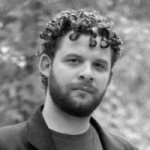 Omri Elisha, Assistant Professor of Anthropology, Queens College of the City University of New York
Omri Elisha, Assistant Professor of Anthropology, Queens College of the City University of New York
This summer I had the pleasure of reading Amira Mittermaier’s Dreams That Matter: Egyptian Landscapes of the Imagination (University of California, 2011), which I have assigned for my upcoming Anthropology of Religion seminar. Mittermaier’s compelling study of Muslim dream interpreters and Sufi devotees in Egypt has received many prestigious awards, and deservedly so. At once theoretically rigorous, vividly humanistic, and painstakingly reflexive, this is a book that restores one’s faith in what honest and committed ethnography can do. Her call for an “anthropology of the imagination” – one that is attentive not only to what people “see” in their dreams and visions but also to what they are shown in them – is provocative without closing in on itself, enabling new lines of ethnographic inquiry rather than reductionist or vaguely philosophical dead ends. Additionally, Mittermaier’s work demonstrates how presumably secular and scientific categories, such as Freud’s theory of the unconscious, became part of Egyptian public and popular culture, so much so that today they are directly implicated in – and to some extent constitutive of – some of the very religious beliefs and pietistic dream revelations that secular reformers find laughable and troubling. I look forward to teaching this book in hopes of generating discussions about the role of ethnographic methods, and their unavoidable limitations, when it comes to studying phenomena such as dreams that we ourselves, as putative observers, cannot see.
______
 M. Christian Green, Senior Fellow, Center for the Study of Law and Religion, Emory University
M. Christian Green, Senior Fellow, Center for the Study of Law and Religion, Emory University
I have most recently been reading several titles as part of a multi-book review essay, forthcoming in the Journal of Law and Religion, on the relationship between freedom of religion and freedom of speech—specifically around the question of whether there should be any limits on freedom of speech about religion in order to preserve freedom of religion in modern, pluralistic democracies. This inquiry is especially directed at secular systems, particularly those premised, as in the U.S., on a separationist paradigm of religion and the state that tends to privatize freedom of religion and absolutize freedom of speech. These include Jeremy Waldron’s The Harm in Hate Speech (Harvard University, 2012), Austin Dacey’s The Future of Blasphemy (Bloomsbury, 2012), and especially the essays by Talal Asad, Wendy Brown, Judith Butler, and Saba Mahmood in the recent edition of Is Critique Secular? (Oxford University, 2013).
In Is Critique Secular?, the essays of Asad and Mahmood, in particular, raise another question that is directing my recent reading on secularism—namely, is religion in secular modernity (or “post-secular postmodernity”) still to be conceived along the traditional model of inheritance, ascription, and belonging? Or is religion now a matter of choice? If religion is a matter of choice, does that give it a lesser, greater, or qualitatively different claim as a human right to religious freedom? This problem of religion’s new “optionality” was raised in Charles Taylor’s A Secular Age, branded as an American global export in John Micklethwait and Adrian Woolridge’s God Is Back (Penguin, 2010), and is shaping my reading of recent books on the Muslim veil controversy, including Leila Ahmed’s A Quiet Revolution (Yale University, 2012) and my friend Elizabeth Bucar’s The Islamic Veil: A Beginner’s Guide (OneWorld, 2012).
______
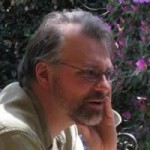 Martin Kavka, Philip and Muriel Berman Chair of Jewish Studies, Lehigh University
Martin Kavka, Philip and Muriel Berman Chair of Jewish Studies, Lehigh University
As one of my final responsibilities at Florida State University, I participated this summer in a reading group on theories of the secular with four wonderful graduate students—Adam Brasich, Mike Graziano, Charlie McCrary, and Jeffrey Wheatley—specializing in American religious history. At their behest, we read Michael Warner’s Publics and Counterpublics (Zone Books, 2002). I had read one of its chapters, “Sex In Public,” when it first appeared, and my vanilla self-image made me reluctant to re-read its closing paragraphs about a singular performance at a leather bar, or to read any of the book’s other chapters. I’m now kicking myself for my stubbornness.
All of the chapters, but especially the chapter that gives the book its title, help to solve that particularly intractable question about the origin of the secular. Using material that sometimes overlaps with data used by scholars of religion, Warner’s thesis is that an author’s desire to publicize a worldview conjures a public that is other than the author but potentially like him or her. Cultural forms come into being and pass away through audiences’ taking up (or refusal to take up) these discursive projections of publics. At a time when some current scholarship in religion seems to offer a highly generative yet somewhat confusing account of the relationship between secularism and publicness, Warner in effect teaches that a felt need for religious authorities to conjure a public entails the positing of a disenchanted realm in which their public at present lives. The breach that makes possible the “exit from religion” is birthed by religious discourse that seeks to verify a postulate and to create a social fact by circulating that postulate in public. Yet once created, that public ironically can and does become the site of non-religious forms of identity.
______
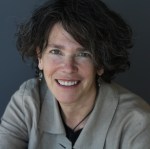 Tanya Luhrmann, Professor of Anthropology, Stanford University
Tanya Luhrmann, Professor of Anthropology, Stanford University
The best book I’ve read recently, in the domain of The Immanent Frame, is Julian Jaynes’ The Origin of Consciousness in the Breakdown of the Bicameral Mind (Mariner, 2000). It’s not the first time I’ve read this book, but it’s been a few decades. I was blown away by how sharp and interesting it was. The amount of intellectual depth Jaynes brings to bear on the question of how a representation of the mind shapes mental experience is truly inspiring. Of course, it is also more than a little wrong. And it is mad. But for sheer sparkle and thought-provocation, this book is hard to beat.
I recently spent time in Africa, looking at the new charismatic churches in Ghana. Kwabena Asamoah-Gyadu’s work is really great—his African Charismatics (Brill, 2004) and Contemporary Pentecostal Christianity (Wipf and Stock, 2013). So is Paul Gifford’s Ghana’s New Christianity (Indiana University, 2004), although it would be hard to call it tactful.
You can’t be in these churches and not pay attention to speaking in tongues. What on earth is going on? So I went back to William Samarin’s elegant Tongues of Men and Angels (Macmillan, 1972) and to Felicitas Goodman’s Speaking in Tongues (Wipf and Stock, 2008). The scientific literature is remarkably thin, though. It’s really astonishing. Something like one in five Americans speaks in tongues and there are just a handful of papers in MedLine. But trying to get my head around tongue-speaking gave me new appreciation for James K. Smith’s philosophically subtle Thinking in Tongues (Wm. B. Eerdmans, 2010). Smith is a philosopher who also preaches in Pentecostal services, and he wants to show you how tongues make meaning without being reductive. To my delight, he calls the Pentecostal worldview “enchanted,” and he means this philosophically.
These churches also make you attend to demons – so, lined up before me are a string of books on demons, although mostly ones on medieval demons that I have always meant to read: Brian Levack’s The Devil Within (Yale University, 2013), Nancy Caciola’s Discerning Spirits (Cornell University, 2006), Armando Maggi’s In the Company of Demons (University of Chicago, 2006), and David Brakke’s Demons and the Making of the Monk (Harvard University, 2006).
And, while in the garden, I listen to Hilary Mantel and am grateful that no one will behead me for my views.
______
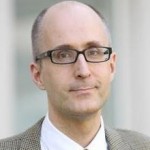 John Schmalzbauer, Blanche Gorman Strong Chair in Protestant Studies, Missouri State University
John Schmalzbauer, Blanche Gorman Strong Chair in Protestant Studies, Missouri State University
I spent the summer roaming the highways and byways of American Protestantism. Without ever visiting Philadelphia, I took a trip on the Main Line, devouring books by Matthew Hedstrom and Elesha Coffman.
In The Rise of Liberal Religion (Oxford University, 2012), Hedstrom shows how mainline book culture paved the way for today’s spiritual seekers. My favorite chapter profiles Harper & Brothers editor Eugene Exman. Exman, who published everyone from Harry Emerson Fosdick to Karl Barth, also experimented with LSD and Eastern mysticism.
Mapping similar terrain, Coffman’s The Christian Century and the Rise of the Protestant Mainline (Oxford University, 2013) chronicles the changing influence of liberal Protestantism’s leading magazine. Cultivating a special relationship with the University of Chicago, its readers could also be found in the small town Midwest.
En route to a conference in Indianapolis, I visited one of those towns. Home to William Jennings Bryan and John T. Scopes, Salem, Illinois also claims to be the birthplace of Miracle Whip. These and other sacred places are profiled in Greg Holden’s The Booklover’s Guide to the Midwest: A Literary Tour (Clerisy, 2009), a work that has taken me to the front porch of Eugene V. Debs and to the gravesite of Jane Addams.
Focusing on a single city, a religious history of Grand Rapids, Michigan enriched my visit to Calvin College. Covering everything from Eerdmans and Zondervan to the Children’s Bible Hour, James D. Bratt and Christopher H. Meehan’s Gathered at the River (Grand Rapids Area Council for the Humanities, 1993) revealed yet another Midwest.
Students of the heartland will enjoy Richard Sisson, Christian Zacher, and Andrew Cayton’s The American Midwest: An Interpretive Encyclopedia (Indiana University, 2006), a work I purchased after visiting John Brown’s cabin and Thomas Hart Benton’s studio. Boasting religion entries by Randall Balmer, Jeanne Halgren Kilde, and Peter Williams, it includes articles on Mennonite relief sales and Willa Cather’s Nebraska.
Like Robert Wuthnow in Remaking the Heartland (Princeton University, 2010), Peter Williams highlights the Midwest’s pragmatism and adaptability. After a summer of Protestant wanderlust, I couldn’t agree more.
______
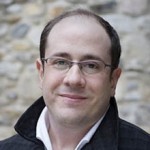 Jeff Sharlet, Mellon Assistant Professor of English, Dartmouth College
Jeff Sharlet, Mellon Assistant Professor of English, Dartmouth College
The first book that comes to mind is by one of The Immanent Frame’s own, Nathan Schneider—not his spring book, God in Proof, which I read pre-publication, but his fall book, Thank You, Anarchy: Notes from the Occupy Apocalypse (University of California, 2013). As the subtitle suggests, Schneider brings a theological lens to this invaluable chronicle of the Occupy movement—invaluable because Schneider was the only journalist on the scene from the very beginning, and, to me, because he brought to it a keen eye for the uses and abuses of apocalyptic politics. “Disappointment is part of any apocalypse,” writes Schneider, pointing to the ways in which momentary utopianism of Occupy, its “movement time,” bled into the ordinary that followed.
Five Days at Memorial by Sheri Fink (Crown, 2013), an account of euthanasia at a New Orleans hospital, is more obviously suffused with religion. The hospital’s staff and patients, and the investigators tasked with determining what happened, bring their various faiths—mostly Catholicism—to bear both on the decisions they make and the ways in which they recall those decisions. It’s an astonishing and important book, though religion is, if not a blind spot, at least a blurry one. Fink sees religion, but asks very few questions about it. She recognizes that religion influences ideas about euthanasia, but as a physician-journalist she prefers to deal with those ideas in ethical, professional, and legal terms.
A Free Man: A True Story of Life and Death in Delhi by Aman Sethi (W.W. Norton, 2012) is my favorite of these three remarkable books, an innovative and rollicking work of documentary prose loosely based around the life of a Muslim day laborer. Sethi stays close to his subject, and his subject isn’t interested in religion. The limited extent to which Sethi discusses religion makes the book an interesting contrast to so much of the literary journalism coming out of India, all of it written by elites (like Sethi), and most of it carefully attending to at least the role of Islam and Hinduism in Indian politics. Perhaps such attention is a misrepresentation. Sethi makes no such claims – he makes no broad claims at all – but his brilliantly written book reveals an inadvertent and casual secularism that is absent in so many other portraits of the so-called “new India.”













Wendy Cadge’s reading sounds interesting immediately in how these studies draw attention to the limitations of using the term “secular” without thinking about the multiple and sometimes competing dimensions and interpretations of these places. Will take a look – thanks for sharing.